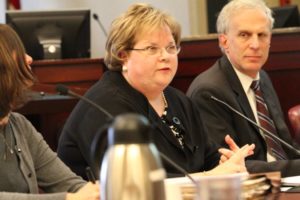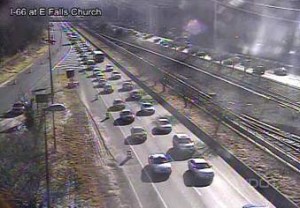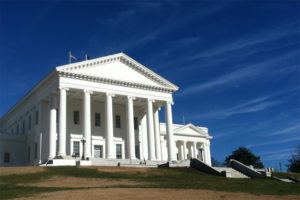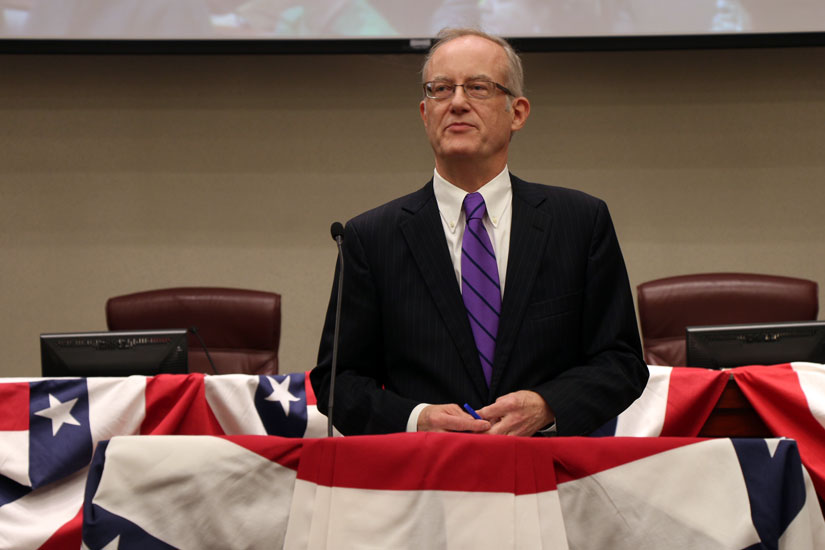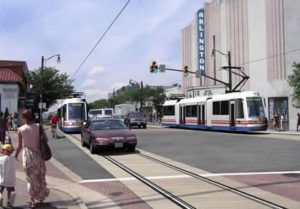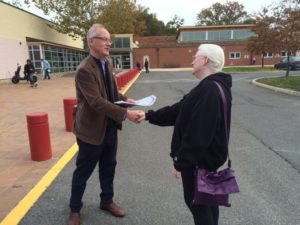(Updated at 8:15 a.m.) Almost half of Arlington’s elected officials will have retired or resigned by Jan. 1, 2016, starting with Chris Zimmerman’s retirement from the Arlington County Board in February 2014.
At the same time, the leadership of the county’s staff is having a major changing of the guard, losing four department heads since last March, not including the impending retirement of County Manager Barbara Donnellan, effective June 30.
“The only constant in life is change,” County Board member Jay Fisette told ARLnow.com yesterday. In January of next year, Fisette and Libby Garvey will be the only Board members to have begun to serve before April 2014.
The list of leaders who have left or are leaving county government reads like a who’s who of Arlington agenda-setters in recent memory:
Rep. Jim Moran, Del. Bob Brink, Board members Zimmerman, Mary Hynes and Walter Tejada, Del. Rob Krupicka, School Board members Sally Baird, Noah Simon and Abby Raphael, Treasurer Frank O’Leary, Donnellan, Community Planning, Housing and Development Director Bob Brosnan, Arlington County Police Chief Doug Scott, Department of Human Services Director Susanne Eisner and the late Terry Holzheimer, Arlington Economic Development Director, who died last year of a heart attack.
“I don’t know that we’ve ever seen so much change at once,” said Eric Dobson, a former Planning Commission chairman and Arlington native who serves as the Northern Virginia government liaison with the NAIOP Commercial Real Estate Development Association.
While the staff turnover is staggering — five of the county’s 14 department directors will be replaced — many county officials say the transitions will be seamless. Deputy County Manager Mark Schwartz, who will become interim county manager on July 1, said that’s partly because of Donnellan’s forward thinking.
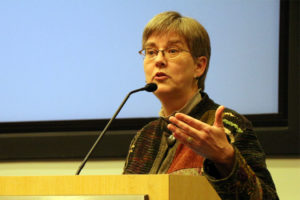 “I think we have great bench strength,” the Boston native and avid Red Sox fan said. “Barbara has always talked about succession planning. You need to have that security. At the same time, I think it’s a good thing that an organization renews itself.”
“I think we have great bench strength,” the Boston native and avid Red Sox fan said. “Barbara has always talked about succession planning. You need to have that security. At the same time, I think it’s a good thing that an organization renews itself.”
Donnellan’s departure will have lasting effects, colleagues said. Many offered effusive praise of her work over the past 31 years, particularly her five years as county manager.
“She will be sorely missed,” said Kevin Shooshan, chairman of the Arlington Chamber of Commerce and vice president of Shooshan Company, a Ballston-based real estate firm. “Everyone in Arlington County was a fan of Barbara Donnellan. People underestimate what that job entails, which is running that entire billion-dollar organization. It’s a big job and a big budget, and she’s done a great job for several years. Everyone’s going to be very sad to see her go.”
Confidence does not abound, however, regarding the future of the Arlington County Board. Hynes and Tejada represent a combined two decades of Board experience, and when the dust settles in November’s election, the future of Arlington could look different.
“That is a far more significant issue than the administrative staff, which has a deep pool,” Fisette said. “Three people set the direction for the Board. The community’s vision can be changed in subtle and harsh ways.”
Five Democrats have announced their candidacy for the two open seats — Peter Fallon, Christian Dorsey, School Board Chair James Lander, Katie Cristol and Andrew Schneider — and one independent, longtime Arlington Green candidate Audrey Clement. No Republicans have declared, nor has any candidate like John Vihstadt announced his or her intention to run.
Still, Vihstadt’s election and resounding re-election last year is fresh in the minds of many in Arlington politics. No one seems to know who — if anyone — will try to emulate Vihstadt’s combination of fiscal conservatism and progressive stances on social issues. Some Democrats running are championing platforms of change, but few have offered specifics of how they would operate any different from Hynes or Tejada. (more…)


